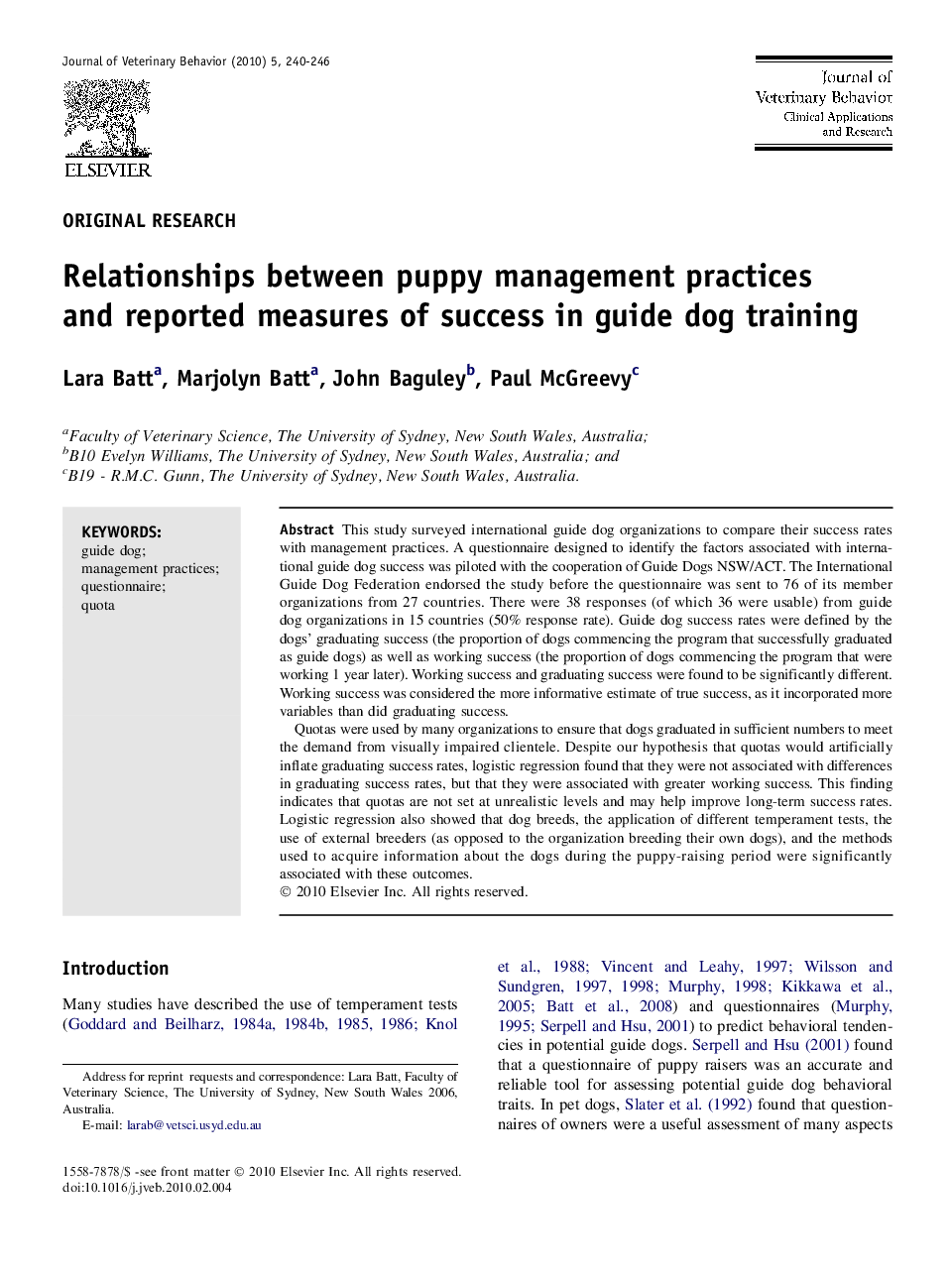| Article ID | Journal | Published Year | Pages | File Type |
|---|---|---|---|---|
| 2399039 | Journal of Veterinary Behavior: Clinical Applications and Research | 2010 | 7 Pages |
This study surveyed international guide dog organizations to compare their success rates with management practices. A questionnaire designed to identify the factors associated with international guide dog success was piloted with the cooperation of Guide Dogs NSW/ACT. The International Guide Dog Federation endorsed the study before the questionnaire was sent to 76 of its member organizations from 27 countries. There were 38 responses (of which 36 were usable) from guide dog organizations in 15 countries (50% response rate). Guide dog success rates were defined by the dogs' graduating success (the proportion of dogs commencing the program that successfully graduated as guide dogs) as well as working success (the proportion of dogs commencing the program that were working 1 year later). Working success and graduating success were found to be significantly different. Working success was considered the more informative estimate of true success, as it incorporated more variables than did graduating success.Quotas were used by many organizations to ensure that dogs graduated in sufficient numbers to meet the demand from visually impaired clientele. Despite our hypothesis that quotas would artificially inflate graduating success rates, logistic regression found that they were not associated with differences in graduating success rates, but that they were associated with greater working success. This finding indicates that quotas are not set at unrealistic levels and may help improve long-term success rates. Logistic regression also showed that dog breeds, the application of different temperament tests, the use of external breeders (as opposed to the organization breeding their own dogs), and the methods used to acquire information about the dogs during the puppy-raising period were significantly associated with these outcomes.
